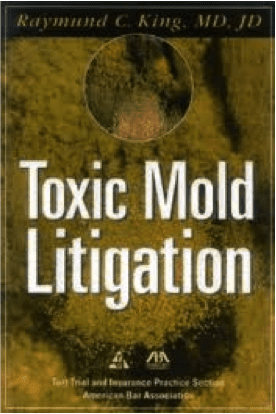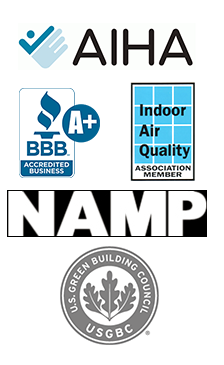Mold Litigation
In the last few years, an increasing number of claims alleging personal injury and property damage resulting from mold infestation problems and exposure have been brought by property owners, employees, tenants, building occupants and local governments. These claims have garnered significant publicity, resulted in surprising verdicts, and caused reactions by impacted industries. Molds are a type of fungi and are ubiquitous in the environment. Molds require moisture to survive. However, unlike most other plants, molds lack chlorophyll and thus they grow on other materials. Outdoors, molds are an integral part of natural processes, breaking down leaves, wood and plant debris. However, indoors, mold spores grow by digesting whatever organic substance they land on, including wallpaper, insulation, drywall, carpet, ceilings and roofs. Scientists have identified over 5,000 species of mold, of which around 150 can cause allergies in humans. Approximately 50 are pathogenic (i.e., they can grow inside the human body), and about 50 are capable of creating “mycotoxins”, fungal metabolites which may cause toxic reactions in healthy individuals. Plaintiffs in mold litigation have alleged that molds cause a variety of different illnesses and adverse health effects – from the more mundane and generic headaches, nausea, fatigue, asthma, hay fever-like symptoms (runny nose and scratchy throat) and respiratory problems, to exotic disorders with accompanying acronyms, such as sick building syndrome (SBS), fibromyalgia (FM), chronic fatigue syndrome (CFS), reactive airway dysfunction syndrome (RADS), toxic encephalopathy (TE) and multiple chemical sensitivity (MCS). Although it is generally accepted in the scientific community that certain mold species can cause allergic reactions in individuals such as coughing, sneezing and breathing problems, there is a lack of scientific consensus regarding (1) whether mold can cause permanent and severe illnesses; and (2) what level of mold exposure may cause such illnesses, or conversely, what is a permissible exposure level (PEL) to indoor mold. The U.S. Centers for Disease Control and Prevention (CDC) reviewed an investigation of pulmonary illnesses in infants in Cleveland, Ohio, in 1994, and initially agreed with the investigators’ conclusion that inhalation of Stachybotrys chartarum spores caused the children to die from pulmonary hemorrhage. However, the CDC later criticized the unscientific sampling and unjustifiable assumptions of the investigators, and now states on the CDC Web site that “[t]here are very few case reports that toxic molds (those containing certain mycotoxins) inside homes can cause unique or rare health conditions such as pulmonary hemorrhage or memory loss. These case reports are rare, and a causal link between the presence of the toxic mold and these conditions has not been proven.” -> Volatile Organic Compounds (VOCs)and Sick Building Syndrome A 1984 World Health Organization Committee report suggested that up to 30 percent of new and remodeled buildings worldwide may be the subject of excessive complaints related to indoor air quality (IAQ). Often this condition is temporary, but some buildings have long-term problems. Frequently, problems result when a building is operated or maintained in a manner that is inconsistent with its original design or prescribed operating procedures. Sometimes indoor air problems are a result of poor building design or occupant activities. Indicators of SBS include: Indicators of BRI include: It is important to note that complaints may result from other causes. These may include an illness contracted outside the building, acute sensitivity (e.g., allergies), job related stress or dissatisfaction, and other psychosocial factors. Nevertheless, studies show that symptoms may be caused or exacerbated by indoor air quality problems. -> What Are VOCs? Volatile Organic Compounds (VOCs) are emitted as gases from certain solids or liquids. VOCs include a variety of chemicals, some of which may have short and long term adverse health effects. Concentrations of many VOCs are consistently higher indoors (up to ten times higher) than outdoors. VOCs are emitted by a wide array of products numbering in the thousands. Examples include: paints and lacquers, paint strippers, cleaning supplies, pesticides, building materials and furnishings, office equipment such as copiers and printers, correction fluids and carbonless copy paper, graphics and craft materials including glues and adhesives, permanent markers and photographic solutions. Organic chemicals are widely used as ingredients in household products. Paints, varnishes and wax all contain organic solvents, as do many cleaning, disinfecting, cosmetic, degreasing, and hobby products. Fuels are made up of organic chemicals. All of these products can release organic compounds while you are using them and, to some degree, when they are stored. EPA’s Total Exposure Assessment Methodology (TEAM) studies found levels of about a dozen common organic pollutants to be 2 to 5 times higher inside homes than outside, regardless of whether the homes were located in rural or highly industrial areas. Additional TEAM studies indicate that while people are using products containing organic chemicals, they can expose themselves and others to very high pollutant levels, and elevated concentrations can persist in the air long after the activity is completed. -> Sources: Household products including paints, paint strippers and other solvents, wood preservatives, aerosol sprays, cleansers and disinfectants, moth repellents and air fresheners, stored fuels and automotive products, hobby supplies and dry-cleaned clothing. -> Health Effects: Health risks include eye, nose and throat irritation, headaches, loss of coordination, nausea, damage to liver, kidney, and central nervous system. Some organics can cause cancer in animals, and some are suspected or known to cause cancer in humans. Key signs or symptoms associated with exposure to VOCs include conjunctival irritation, nose and throat discomfort, headache, allergic skin reaction, dyspnea, declines in serum cholinesterase levels, nausea, emesis, epistaxis, fatigue and dizziness. The ability of organic chemicals to cause health effects varies greatly from those that are highly toxic to those with no known health effects. As with other pollutants, the extent and nature of the health effect will depend on many factors including level of exposure and length of time exposed. Eye and respiratory tract irritation, headaches, dizziness, visual disorders and memory impairment are among the immediate symptoms that some people have experienced soon after exposure to some organics. At present, not much is known about what health effects occur from the levels of organics usually found in homes. Many organic compounds are known to cause cancer in animals; some are suspected of causing, or are known to cause, cancer in humans. Levels in Homes Studies have found that levels of several organics average 2 to 5 times higher indoors than outdoors. During and for several hours immediately after certain activities such as paint stripping, levels may be 1,000 times background outdoor levels. Standards or Guidelines No standards have been set for VOCs in non industrial settings. OSHA regulates formaldehyde, a specific VOC, as a carcinogen. OSHA has adopted a Permissible Exposure Level (PEL) of .75 ppm, and an action level of 0.5 ppm. HUD has established a level of .4 ppm for mobile homes. Based upon current information, it is advisable to mitigate formaldehyde that is present at levels higher than 0.1 ppm. If you’re concerned about your health, make sure to contact us today.
 The term “sick building syndrome” (SBS) is used to describe situations in which building occupants experience acute health and comfort effects that appear to be linked to time spent in a building, but no specific illness or cause can be identified. The complaints may be localized in a particular room or zone, or may be widespread throughout the building. In contrast, the term “building related illness” (BRI) is used when symptoms of diagnosable illness are identified and can be attributed directly to airborne building contaminants.
The term “sick building syndrome” (SBS) is used to describe situations in which building occupants experience acute health and comfort effects that appear to be linked to time spent in a building, but no specific illness or cause can be identified. The complaints may be localized in a particular room or zone, or may be widespread throughout the building. In contrast, the term “building related illness” (BRI) is used when symptoms of diagnosable illness are identified and can be attributed directly to airborne building contaminants.
The Dry Ease Promise

The Dry Ease Solution

Servicing
Brooklyn
Bronx
Queens
Staten Island
New Jersey
